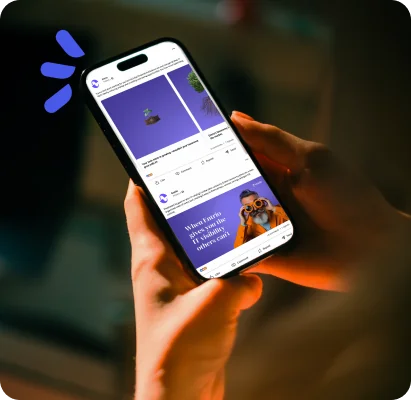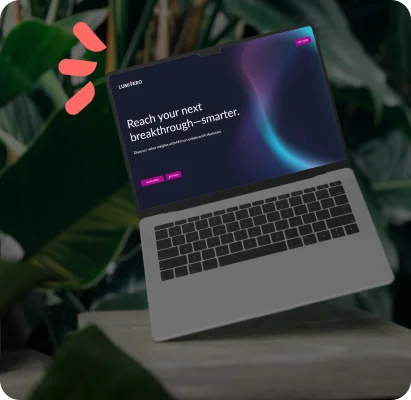
Lead generation can make or break a business. Without a steady stream of qualified prospects, sales pipelines dry up and growth stalls. But here’s the catch: generating leads isn’t about casting the widest net. It’s about attracting the right people with the right message, through the right channels.
Too many companies obsess over volume (“we need more leads!”) instead of focusing on quality. A thousand unqualified leads are worthless compared to 50 decision-makers who are actively searching for a solution like yours.
We believe in lead generation that’s strategic, measurable, and sustainable. That means knowing your audience, diversifying your channels, and building campaigns that don’t just grab attention, but convert it into action.
Here are our top tips for lead generation in today’s landscape.
1. Diversify Your Channels
Your buyers aren’t all in one place, and your lead generation strategy shouldn’t be either. Relying on a single channel is risky. If algorithms change, ads stop performing, or your audience shifts, your pipeline takes the hit.
A strong mix usually includes social selling, content marketing, email campaigns, events or webinars, and some level of paid media. Each channel has its role: content and SEO bring in long-term organic traffic, while paid search can give you an immediate boost. Social media builds trust through visibility and conversation, and email keeps leads engaged once they’re in your funnel.
Quick tip: Don’t spread yourself too thin. Start with 2–3 channels, get them working well, then expand.
2. Master Social Selling
Social selling is no longer optional. It’s how modern buyers vet companies before they ever talk to sales. When your team is active online—especially on LinkedIn—you expand your reach far beyond your company page.
To do it well:
- Optimize personal profiles so they speak to prospects, not recruiters.
- Share insights, tips and stories consistently (not just company promos).
- Engage in real conversations by commenting on posts from customers, prospects, and thought leaders.
People trust people more than they trust brands. Social selling turns your team members into advocates who humanize your company.
Quick tip: Start small. Aim for 10–15 minutes a day of LinkedIn engagement per salesperson—it adds up fast.
3. Nurture Leads With Email
Despite predictions of its death, email is still one of the most effective lead-nurturing tools. But it’s not enough to send one-off blasts. The companies seeing success today use thoughtful segmentation and automated workflows to stay relevant.
That means sending the right content to the right people at the right time. Someone downloading a beginner’s guide shouldn’t immediately get an email asking them to book a demo. Instead, send them a short series of emails expanding on what they downloaded: tips, tools, or case studies that build credibility.
Quick tips for email:
- Segment your list by persona and buyer stage.
- Keep emails short and skimmable; mobile-friendly is a must.
- Use subject lines that sound human, not spammy.
When done right, email keeps your brand top-of-mind until prospects are ready to take the next step.
4. Use Content to Teach, Not Pitch
Content marketing works because it gives prospects value before they’re ready to buy. Instead of interrupting them with ads, you show up when they’re already looking for answers.
The best content solves a real problem your audience has and guides them toward a goal. At the top of the funnel, that might look like blog posts that explain a common challenge. In the middle, maybe it’s a checklist or case study that shows how others solved the problem. At the bottom, it could be a webinar or detailed demo that proves why your solution is the right fit.
Formats worth prioritizing:
- Blog posts for SEO and thought leadership.
- Checklists and guides for gated lead-gen offers.
- Short videos for bite-sized education.
- Case studies that provide real-world proof.
Quick tip: Repurpose content. One webinar can fuel multiple blogs, infographics, and social posts.
5. Optimize for Search (With AI in Mind)
If your website isn’t showing up in search, you’re invisible to a huge portion of potential buyers. SEO has always been key, but the rise of AI-driven search is changing the rules.
Long-tail keywords are your best friend. Instead of generic phrases like “accounting software,” target specific queries such as “affordable accounting software for freelancers.” These searches may be lower volume, but they bring in highly motivated prospects and do a better job of understanding searcher intent.
Quick SEO checklist:
- Include your keyword in titles, headers, URLs and alt text.
- Write meta descriptions under 155 characters.
- Add both internal and external links to boost authority.
Pro tip: Test your brand visibility by asking AI tools like ChatGPT or Perplexity, “What would a neutral party say about [your company]?” If the answers don’t reflect how you want to be perceived, it’s time to adjust your content strategy.
6. Partner Up for Visibility
Partnerships are one of the fastest ways to expand reach. When you collaborate with another company—whether through a joint webinar, a co-branded resource, or even a simple social media cross-promotion—you tap into their audience as well as your own.
The best partnerships are with companies that complement what you do without competing directly. For example, an HR consultant might team up with a payroll provider. Both sides benefit, both audiences gain value, and you both increase visibility.
Quick tip: Treat partnerships as long-term relationships, not one-offs. Follow up, nurture, and look for multiple ways to collaborate.
7. Build Relationships With Thought Leaders
In every industry, there are voices buyers listen to and trust. Instead of competing with them, collaborate. Start by genuinely engaging with their content. Share their insights, comment on posts, and build rapport before asking for anything.
Once you’ve established a connection, look for opportunities to guest blog, co-host webinars, or feature them on your own platforms. When a respected voice shares your content, it lends instant credibility—and credibility drives leads.
8. Leverage PR the Smart Way
PR isn’t about flashy press releases anymore; it’s about building relationships with publications and writers your prospects actually read.
Don’t wait until you have a big announcement to pitch. Connect early: share articles, engage with journalists on LinkedIn, and keep the relationship warm. When you finally have a story, it’s more likely to get picked up.
Quick tip: Think beyond national media. Industry trade publications and even local business journals often have highly engaged, niche audiences.
9. Harness Customer Evangelists
Your happiest customers are your best marketers. A glowing review or referral from them carries more weight than any ad campaign.
Encourage them to advocate for you by making it easy and rewarding:
- Launch a referral program.
- Collect testimonials and reviews.
- Give loyal customers early access to new features or special events.
Evangelists feel like insiders—and when they share their experience, it sparks organic conversations about your business.
10. Speak on Stages (Without Breaking the Bank)
Conferences are great, but they’re expensive and often crowded with competitors. Today, you can get in front of an audience without spending thousands on a booth.
Pitch yourself as a podcast guest (Are you a marketer? Reach out to be a guest on our podcast!). Host webinars on LinkedIn Live or Zoom. Partner with associations or community groups that serve your target audience. Speaking builds authority, and authority builds trust—which ultimately builds leads.
Quick tip: Record every speaking session. Even a small workshop can be repurposed into blogs, social clips, or gated content.
Let’s sum it up
Lead generation isn’t about chasing every shiny tactic… it’s about building a system that attracts, engages, and converts the right people consistently.
Diversify your channels so you’re not dependent on one source. Show up authentically on social. Use content to teach, not pitch. Leverage partnerships and PR to grow visibility. And never forget the power of your existing customers to spread the word.
When you treat lead generation as a long-term strategy rather than a quick fix, you stop worrying about filling the pipeline. Instead, you create a steady flow of qualified leads who actually want to work with you.👋 Want help building a lead generation strategy that actually works? Let’s talk.
Subscribe to our newsletter
Curated content, news articles, team updates and more.



